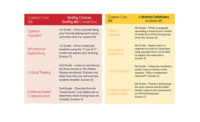How to Build Business At Home and Abroad
This time of year, it’s good to reflect on where we’ve been, where we’re going and what we wish for in the future.
This time of year, it’s good to reflect on where we’ve been, where we’re going and what we wish for in the future. We are wrapping up a year of transition and change not only for our nation but our industry as well. As a nation and an industry, we have continued to struggle through the fallout from the economic downturn while at the same time working diligently to move forward. In California, the pressure is on to find a home for the 40 billion pounds of raw milk that we produce in our state each year – something we feel every day.
Despite the economy, the California Milk Advisory Board has made great strides in finding a home for this milk in products in California, across the United States and in international markets like Mexico and Asia through the use of the promotional support behind our Real California Milk and Real California Cheese seals. In fact, since the introduction of the Real California Milk seal less than three years ago, we’ve facilitated new distribution for more than 2.7 billion pounds of milk equivalent, which translates to new sales of fluid milk, butter, cheese, yogurt and other dairy products.
We are also seeing impressive growth in building sales of California dairy products in emerging markets like Mexico where we have products in 1,400 retail stores, and in emerging Asian markets where we are working with 32 California processor partners to distribute dairy in 13 countries.
In 2011, we will begin the development and implementation of a new five-year plan to continue these demand-building activities focusing on several key areas: continuing expansion east and into international markets with manufactured dairy products, deepening our partnerships throughout the supply chain and expanding the use of Real California milk right here in our home state.
California is the nation’s No. 1 milk state and we produce far more raw milk than required by our own population. That means we have to look beyond state borders to find a home for this additional raw milk in manufactured dairy products like cheese, butter and ice cream. Retailers throughout the United States appreciate our national advertising campaign and retain promotional support. Our proximity to Mexico and the Pacific Rim means we can easily serve the demand from these growing markets.
Our role as dairy-product marketers means we must work well with all areas of the supply chain – from the producers who make the milk (and fund our programs) through to the processors, wholesalers and retailers. We have put a structure in place where we can make the connections between buyers and sellers to open up business channels while keeping in mind that the consumer is king (or queen, as it may be). After all, if we aren’t making the products that consumers want to buy, we are all wasting our time.
Our new consumer is far from your next-door neighbor. International markets hold great promise as these populations continue to grow and prosper and look for a quality food source. We need to work together as an industry to develop distribution channels, participate in marketing/promotional opportunities and deal with these markets as separate entities.
Each country we enter is an individual market we want to grow for the long term and each needs to be treated that way, not as a dumping ground for U.S. surplus. Each country has individual needs for products, product packaging and flavor preferences, as well as specific distribution challenges that may differ significantly from the way we have always done business.
We are also looking for opportunities close to home where we can promote California dairy and work with fluid milk processors to use the seals to build their business while supporting local dairy families by using and promoting California fluid milk.
If I were to be granted three wishes for the industry as we look ahead, it would be to solve the key challenges that we face and that are holding us back from long-term success. I would:
1. Ask our dairy Santa Claus to bring us realistic solutions to the chronic oversupply of milk and the imbalance it creates in the supply chain.
2. Hope for a way to proactively deal with the issues that have lead to (and continue to be responsible for) overregulation of our industry not only in California but also nationwide.
3. Beg for a big bucket of money to be invested in innovation and expansion of our processing capacity.
That’s no small order, but if we do it right, it will provide substantial growth for the California dairy industry for generations to come.
Stan G. Andre is CEO of the California Milk Advisory Board, South San Francisco, Calif.
This time of year, it’s good to reflect on where we’ve been, where we’re going and what we wish for in the future. We are wrapping up a year of transition and change not only for our nation but our industry as well. As a nation and an industry, we have continued to struggle through the fallout from the economic downturn while at the same time working diligently to move forward. In California, the pressure is on to find a home for the 40 billion pounds of raw milk that we produce in our state each year – something we feel every day.
Despite the economy, the California Milk Advisory Board has made great strides in finding a home for this milk in products in California, across the United States and in international markets like Mexico and Asia through the use of the promotional support behind our Real California Milk and Real California Cheese seals. In fact, since the introduction of the Real California Milk seal less than three years ago, we’ve facilitated new distribution for more than 2.7 billion pounds of milk equivalent, which translates to new sales of fluid milk, butter, cheese, yogurt and other dairy products.
We are also seeing impressive growth in building sales of California dairy products in emerging markets like Mexico where we have products in 1,400 retail stores, and in emerging Asian markets where we are working with 32 California processor partners to distribute dairy in 13 countries.
In 2011, we will begin the development and implementation of a new five-year plan to continue these demand-building activities focusing on several key areas: continuing expansion east and into international markets with manufactured dairy products, deepening our partnerships throughout the supply chain and expanding the use of Real California milk right here in our home state.
California is the nation’s No. 1 milk state and we produce far more raw milk than required by our own population. That means we have to look beyond state borders to find a home for this additional raw milk in manufactured dairy products like cheese, butter and ice cream. Retailers throughout the United States appreciate our national advertising campaign and retain promotional support. Our proximity to Mexico and the Pacific Rim means we can easily serve the demand from these growing markets.
Our role as dairy-product marketers means we must work well with all areas of the supply chain – from the producers who make the milk (and fund our programs) through to the processors, wholesalers and retailers. We have put a structure in place where we can make the connections between buyers and sellers to open up business channels while keeping in mind that the consumer is king (or queen, as it may be). After all, if we aren’t making the products that consumers want to buy, we are all wasting our time.
Our new consumer is far from your next-door neighbor. International markets hold great promise as these populations continue to grow and prosper and look for a quality food source. We need to work together as an industry to develop distribution channels, participate in marketing/promotional opportunities and deal with these markets as separate entities.
Each country we enter is an individual market we want to grow for the long term and each needs to be treated that way, not as a dumping ground for U.S. surplus. Each country has individual needs for products, product packaging and flavor preferences, as well as specific distribution challenges that may differ significantly from the way we have always done business.
We are also looking for opportunities close to home where we can promote California dairy and work with fluid milk processors to use the seals to build their business while supporting local dairy families by using and promoting California fluid milk.
If I were to be granted three wishes for the industry as we look ahead, it would be to solve the key challenges that we face and that are holding us back from long-term success. I would:
1. Ask our dairy Santa Claus to bring us realistic solutions to the chronic oversupply of milk and the imbalance it creates in the supply chain.
2. Hope for a way to proactively deal with the issues that have lead to (and continue to be responsible for) overregulation of our industry not only in California but also nationwide.
3. Beg for a big bucket of money to be invested in innovation and expansion of our processing capacity.
That’s no small order, but if we do it right, it will provide substantial growth for the California dairy industry for generations to come.
Stan G. Andre is CEO of the California Milk Advisory Board, South San Francisco, Calif.
Looking for a reprint of this article?
From high-res PDFs to custom plaques, order your copy today!







